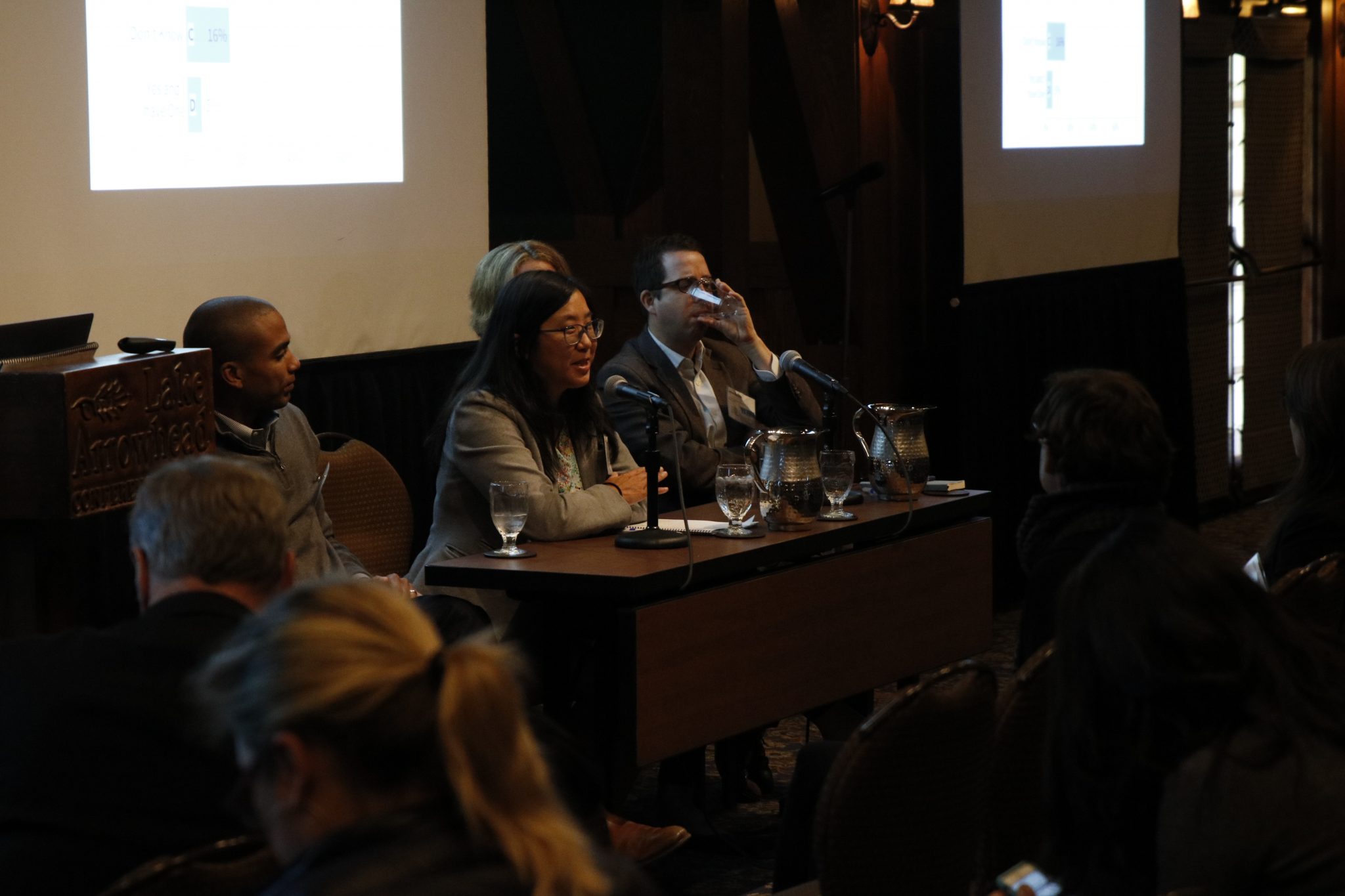By Alfonso Directo Jr.
The 27th Annual UCLA Lake Arrowhead Symposium – “Global Climate Change, Local Growing Pains” – tackled the connections and conflicts between sustainability goals and land use policy in California and beyond. Here’s a dispatch from a session on Tuesday, October 17, and a summary video with the three panelists.
How can we grow our urban areas more responsibly? The 2017 symposium’s final panel, moderated by the Lewis Center’s John Gahbauer, featured pragmatic local leaders presenting tools they have each used to help communities, developers, and decision-makers better understand, create, evaluate, and modify individual projects that support positive growth.
Jason Neville, founder and CEO of Building Blocks, argued for activating the underutilized residential urban land tucked away in Southern California backyards. His company builds accessory dwelling units (ADUs), which he believes are one way to grow the region’s housing stock while simultaneously addressing residential displacement in rapidly developing neighborhoods. ADU permits have skyrocketed in Los Angeles since the City officially legalized earlier this year, growing from 142 permits in 2016 to 537 in the first half of 2017. Because homeowners can only build one ADU per household, Mr. Neville explained that scaling up the market remains a challenge, but that Building Blocks offers a way to scale more quickly by giving homeowners the institutional knowledge to permit and build a unit.
Ann Cheng is the program director at GreenTRIP, a free online tool from TransFORM that analyzes the traffic and greenhouse gas emission impacts of residential development. GreenTRIP users can find specific evaluations of proposed projects on an information- and graphic-rich website, so that developers and decision-makers quickly understand the net impact of their development on roads and the environment. Ms. Cheng made the case for using this tool to certify projects, which could generate competition among land developers looking to make a positive social impact.
Terri Harding, a principal planner with the City of Eugene, Oregon, spoke about the process behind Envision Eugene, the City’s approach to establishing an urban growth boundary. She shared how planners wanted to make sure the public understood the context of the decision to the boundary before the city council voted on it, publishing one-page “snapshots” around seven topical areas that council members were considering in their deliberations, including housing and climate.
Finally, Randall Winston of the State of California’s Strategic Growth Council discussed why his agency requires grant awards for the Transformative Climate Communities program to be contingent on the ability to organize and involve community partners throughout the life of the investment. Applicants seeking funding for a land development project, for example, must provide the council with a memorandum of understanding signed by all members of the partnership, an anti-displacement plan, and a climate action plan in order qualify for state funding. By requiring grant applicants to form collaborative partnerships, Mr. Winston hopes to ensure that the communities receiving development funds are ready for multi-year investments and on board with projects for the long haul.
